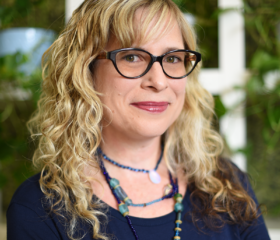
Flamboyan is working closely with twelve arts organizations on the island to preserve, amplify, and sustain the arts in Puerto Rico with an additional round of grantees to be announced this summer. This series will spotlight all twelve Arts Fund grantee organizations.
Revitalizing Through the Arts: Meet Puerto Rico Museum of Contemporary Art
The Puerto Rico Museum of Contemporary Art (MAC) is a vibrant space where islanders and visitors alike can come to connect with others to appreciate art and performances. The Museum not only houses an impressive collection of art, it also brings artists and people together. Ten days after Hurricane María struck the island in September of 2017, the Museum opened its doors to the community to bring people together for the first time since the storm. It makes art part of the daily lives of the communities it serves.
Founded in 1984 in collaboration between artists and philanthropists, the MAC has been instrumental in the preservation, documentation and promotion of art produced since 1940 in Puerto Rico, the Caribbean, Latin America and its diasporas. Throughout the year, the Museum organizes thematic exhibitions of its collection while presenting temporary exhibitions of local and foreign artists; it offers a varied program of multidisciplinary activities like concerts, film screenings and theater shows to poetry and contemporary dance.
To find out more about this dynamic museum, continue reading below.
What’s the story behind the creation of the Puerto Rico Museum of Contemporary Art?
The MAC was founded and incorporated as a nonprofit organization on October 1984. All its collections belong to the people of Puerto Rico. The vision of the artists was fundamental when creating the museum and it was conceptualized as a place to foster multidisciplinary experiences open to all art and contemporary culture expressions.
After its incorporation, the MAC offered its services in public spaces like Plaza Las Américas (a mall) until Sacred Heart University (Universidad del Sagrado Corazón) gave the museum a provisional space at its Magdalena Sofía Barat building. The MAC was able to develop its programs further from there for the next 15 years. After years of looking for a permanent space for the MAC, the government conceded the museum the use of the historic Rafael M. Labra building on October 2002.
Can you describe part of the work the Museum does?
As published in an article by the Mellon Foundation, the Puerto Rico Museum of Contemporary Art is conceived as a hybrid institution: a space of production and creation as well as of research, exhibition, and conservation. The museum’s leadership believes that an interdisciplinary focus is essential for a museum dedicated to contemporary art and that our audiences should participate directly in the process of art to consolidate their contemporary art education, as contemporary art is characterized by its emphasis on process and on the construction and exhibition of artworks and interventions.
For these reasons the MACPR has been actively commissioning art since 2009. Through their intra- and extramural residency programs such as Taller Vivo (Live Workshop) and El MAC en el Barrio (MAC in the Barrio), we have given continuity to our commitment to act as an observatory of new aesthetics and to encourage the systematic study and analysis of convergent artistic disciplines. Through both these programs as well as through our exhibition and education programs, we consistently (in spite of limited funding) provide work opportunities for artists through commissioned projects and by engaging them as workshop facilitators, speakers, and more.
MAC in el Barrio, an initiative now in Santurce, Río Piedras, Guaynabo and Cataño, commissions multidisciplinary artist residencies developed in communities to “give voice to marginalized social sectors using art as a fundamental support mechanism for social justice processes”. The museum organizes exhibitions and an educational program (art seminars for teachers, workshops for students and the general public). MAC also acts as a respected venue for various forms of performing arts (music, dance, theater) and performance art – currently hosting a two-year performance art incubator for 20 artists in collaboration with Northwestern University. It has a longstanding partnership with its neighboring school and incorporates university students through independent projects. Among other projects, MAC has an interest in launching a sustainable cultural tourism initiative that fairly represents communities and benefits artists and community members (training, jobs, etc.).
What was the reality of the Museum after Hurricane María and before receiving the Flamboyan Arts Fund grant?
As expressed to the Mellon Foundation by Marianne Ramírez Aponte, MAC’s Executive Director, “in the weeks after Hurricane Maria, the MAC became aware that it had moved beyond the role of an unusual art institution with intensive community engagement programming or a storage location for important artworks and archives. It had become a home—a community center and major resource for those seeking aid after the storm. It was a center for relief distribution and a place where people gathered to fill out FEMA forms. It offered an Artist Emergency Fund providing financial assistance. It offered programming to students who had lost their academic routines because of power outages and destruction caused by the hurricane, as well as art therapy and other services for families and seniors.”
How is the Museum using the funds it received?
The MAC is currently using the funds to repair the building, buy a power generator, cover operational costs, acquire more human resources and giving grants to independent/individual artists.
This post concludes our 12 part series on our inaugural Arts Fund grantees! Learn more about the Arts Fund @ http://www.flamboyanartsfund.org.

Neeltje van Marrissing Méndez is the Managing Director of Communications and External Affairs in our Puerto Rico office. Learn more about her at https://flamboyanfoundation.org/team_members/neeltje-l-van-marrissing-mendez/.